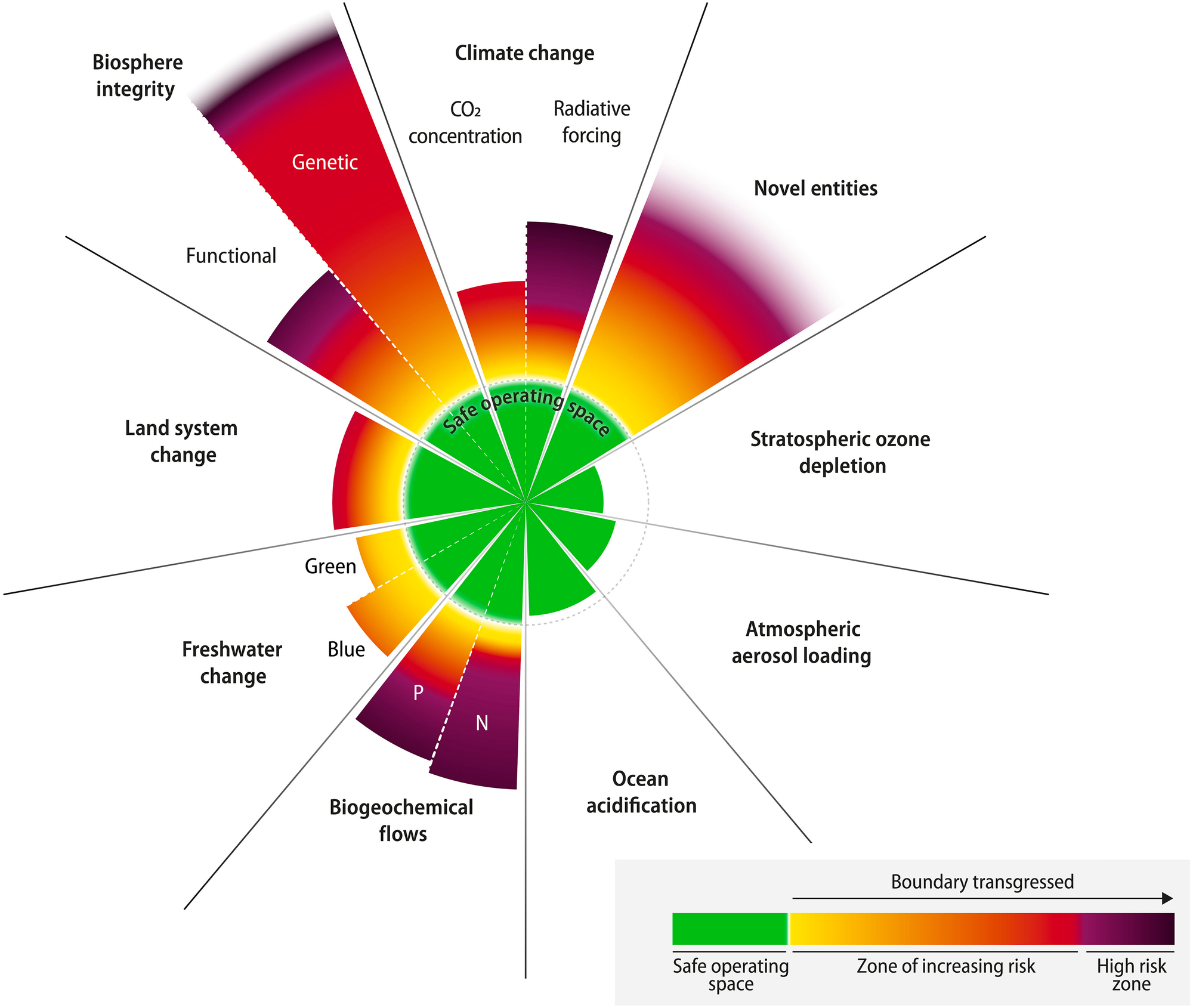
Understanding the Planet Boundaries to shape tomorrow's sustainability narrative.
A Bold Perspective from Pale Blue Dot
We must broaden the canvas.
In the tapestry of sustainability, decarbonization stands as a pivotal thread, but at Pale Blue Dot, we believe it's time we broaden the canvas.
Our perspective transcends the singular focus on CO2 emissions, embracing a holistic approach anchored in Planetary Boundaries. We see decarbonization as essential, but it's just one lever among many in our pursuit of a regenerative future.
At Pale Blue Dot, we're believers, navigating uncharted waters with a spirit of innovation and collaboration. Inspired by the interconnectedness of Earth's systems, we recognize the need for a paradigm shift in how we approach sustainability. Planetary Boundaries offer us a roadmap—a compass guiding us towards a future where humanity thrives in harmony with the planet.
Leveraging the Power of 9 for Sustainable Innovation.
Each of the nine Planetary Boundaries represents a unique opportunity for innovation and progress. Unlike the singular focus on CO2 emissions, these indicators offer a multifaceted approach to address the interconnected challenges facing our planet. From harnessing renewable energy to safeguarding biodiversity, from revolutionizing agricultural practices to preserving marine ecosystems—these boundaries offer a diverse array of avenues for positive change.
1. Climate Change: While decarbonization is vital, we also prioritize renewable energy, sustainable land use, and carbon sequestration to foster economic growth and equity.
2. Biosphere Integrity: Protecting and restoring ecosystems is fundamental, recognizing their intrinsic value to life on Earth.
3. Land-System Change: Sustainable agriculture and land-use planning strike a balance between human needs and preserving natural habitats.
4. Freshwater Use: Innovative water management and recycling ensure equitable access while safeguarding freshwater ecosystems.
5. Biogeochemical Flows: Championing circular economy practices and efficient nutrient management minimizes pollution and promotes sustainable food production.
6. Ocean Acidification: Sustainable fisheries management and ocean conservation efforts are imperative to protect marine ecosystems and coastal communities.
7. Atmospheric Aerosol Loading: Pollution control technologies and clean air initiatives improve air quality and protect public health.
8. Stratospheric Ozone Depletion: Upholding international agreements and investing in ozone-friendly technologies preserve this vital layer and safeguard life on Earth.
9. Chemical Pollution: Leading in green chemistry innovations and advocating for stringent pollution regulations protect our environment and well-being from toxic substances.
By embracing the complexity of Planetary Boundaries, we unlock a world of possibilities, where every action taken echoes across ecosystems and communities, shaping a sustainable and resilient future for generations to come. While decarbonization remains a critical lever in our pursuit of sustainability, it represents only one facet of the broader opportunity presented by Planetary Boundaries—a holistic framework that invites us to reimagine our relationship with the Earth and chart a course towards a thriving planet for all.
As actors of the Earth's future, we invite you to join us on this transformative journey. Together, let's embrace the complexity of Planetary Boundaries and forge a path towards a sustainable and resilient world—a world where our actions today shape tomorrow’s narrative.

